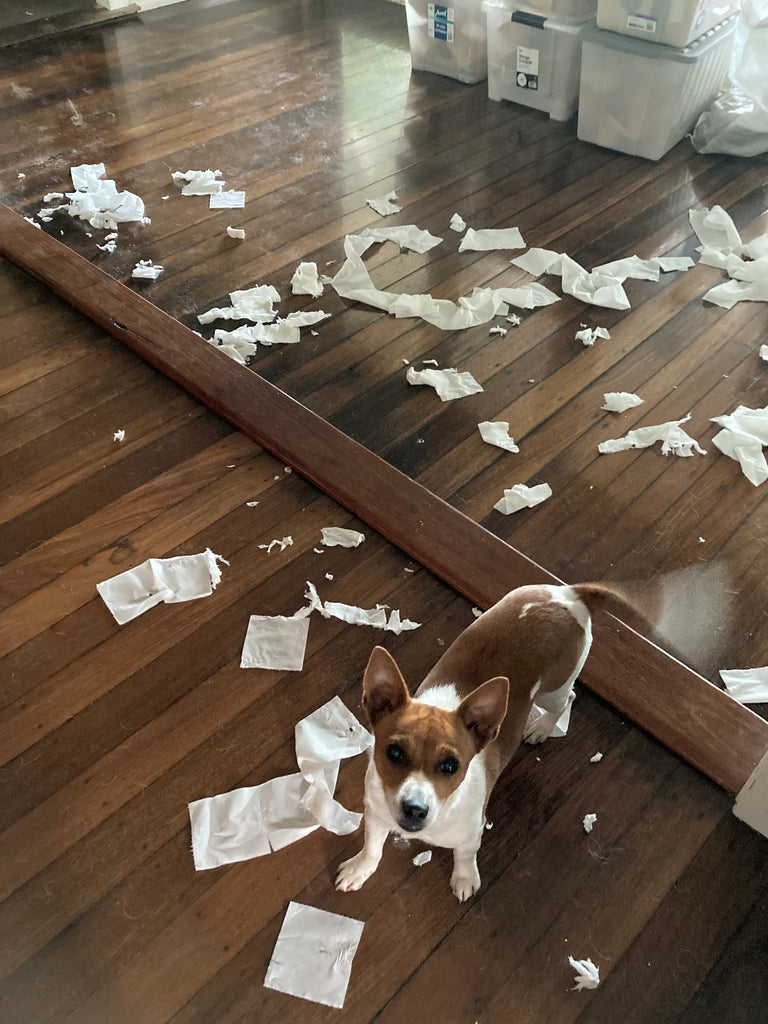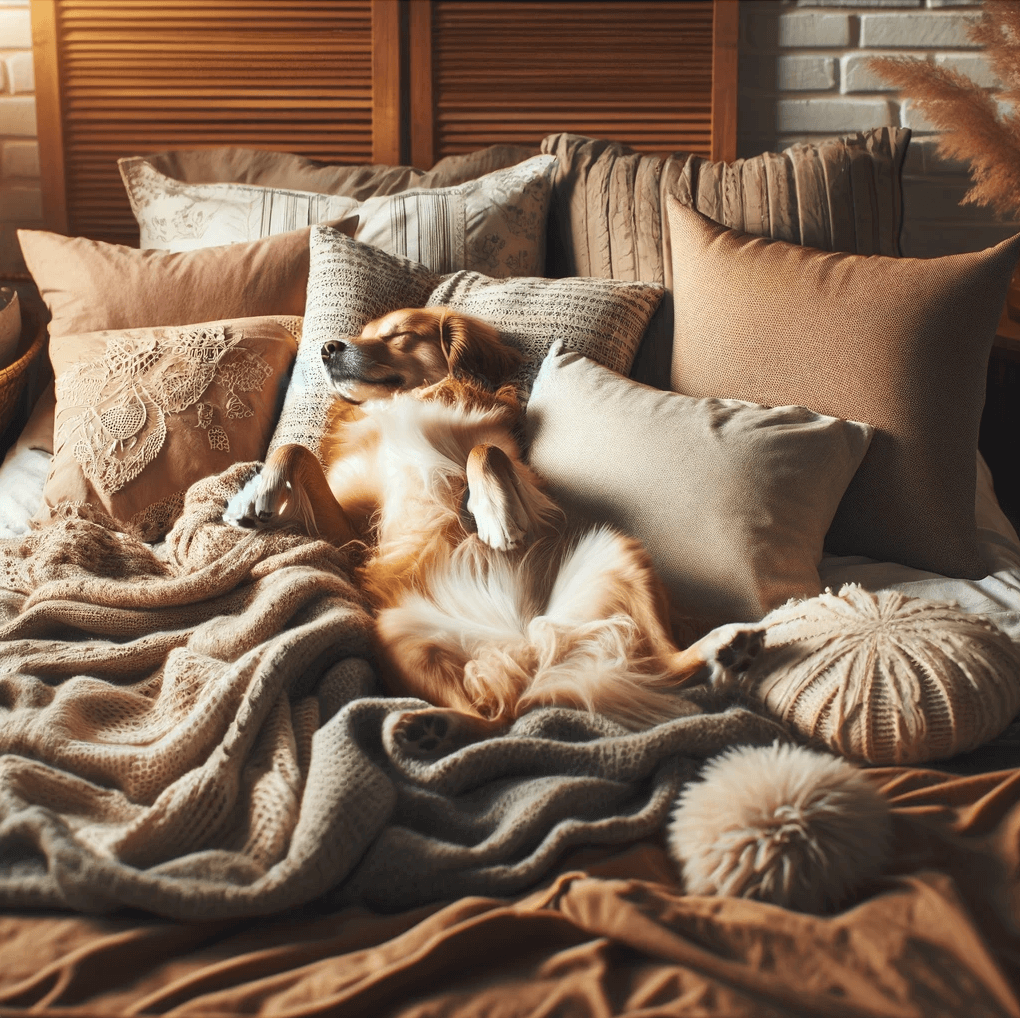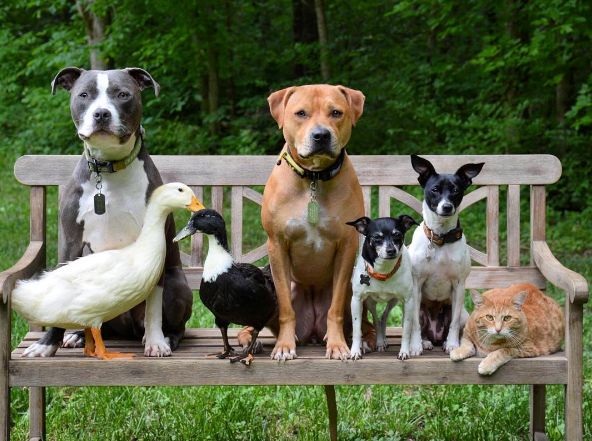Ever wonder what your dog does the moment you step out the door, leaving them to their own devices? It's like the curtain rises on a secret theatre production starring your dog!
Picture this: the stage is set, the audience is non-existent (unless there is another dog watching and ready to join in), and your pup is the star of their own canine comedy.
Home Alone – What your best friend gets up to!
As you bid your dog farewell with a heartfelt "be good, I love you, I’m going to miss you" they exchange a knowing glance, secretly planning their grand escapades the moment you're out of sight.
From the outside, your home may seem like a serene sanctuary, but behind closed doors, it's a full-blown canine carnival!

So, what do dogs do when left home alone?
Learning to be left alone is an important part of your dog's training and will help prevent your dog from ever becoming anxious when they're left by themselves. So, if you've recently welcomed a dog or puppy into your family, it's important to show them that being left at home is nothing to worry about or create a circus about.
When dogs are home alone, their activities can vary depending on their personality, age, and environment. Here are some common behaviours that dogs may engage in when left alone:
Resting or Sleeping:
Dogs, by nature, are crepuscular animals, meaning they are most active during dawn and dusk. However, during the day when they're left alone, many dogs choose to rest or sleep. Dogs typically sleep anywhere from 12 to 14 hours a day, sometimes more depending on their age and breed. When left alone, they often find a cosy spot, whether it's a favourite bed, a sunlit patch on the floor, or a comfortable chair, and curl up for a nap. Dogs may take advantage of the quiet environment to catch up on much-needed rest and recharge their energy levels for when their owners return.
Exploring:
Curiosity is inherent in dogs. When they're home alone, especially if they're inquisitive by nature, they might take the opportunity to explore their surroundings. They may sniff around different rooms, investigate corners, and check out objects that they might not have noticed when their owners are present. This exploration allows them to satisfy their innate curiosity and discover new scents, sights, and textures.
Playing with Toys:
Toys are essential for a dog's mental and physical well-being, and many dogs enjoy playing with them even when left alone. Toys that dispense treats or provide mental stimulation, such as puzzle toys or chew toys, can keep dogs entertained and engaged while their owners are away. Unfortunately, dogs may interact with various household objects to alleviate boredom and satisfy their natural instincts. They may rearrange pillows or blankets (by pulling the stuffing out) to create a more comfortable resting spot, move toilet paper around the house, nibble on pot plants, and attempt to play Hide N Seek with your shoes.

Chewing:
Chewing is a natural behaviour for dogs, and it serves various purposes, including relieving boredom, alleviating anxiety, and maintaining dental health. Unfortunately, some dogs may resort to chewing on inappropriate items when left alone, such as furniture, shoes, or household objects. Providing appropriate chew toys and ensuring that the environment is free from valuable or dangerous items can help redirect this behaviour.
Watching and Waiting:
Dogs are often keenly aware of their surroundings, and they may spend time near windows or doors, watching and listening for signs of their owners' return. They may also respond to familiar sounds or routines, such as the sound of a car pulling into the driveway or the jingle of keys.
For dogs with access to windows or doors with a view, observing wildlife can be a fascinating pastime. Dogs may spend time watching birds flying by, other animals playing in the yard, or even observing the movements of insects. This observation provides mental stimulation and entertainment for dogs.
Listening to Sounds:
Dogs have keen hearing and are sensitive to a wide range of sounds in their environment. When home alone, dogs may listen intently to various sounds, including the chirping of birds, rustling of leaves, or distant noises from neighbouring homes or streets.
Maintaining Alertness:
Dogs have an innate sense of vigilance and may remain alert even when left alone. They may keep an eye out for any changes or potential threats in their environment, such as unfamiliar noises or movements, and respond accordingly to protect their territory.
Self-Grooming:
Self-grooming is a natural behaviour for dogs and serves several purposes, including cleaning their fur, removing loose hair, and promoting relaxation. Dogs may engage in self-grooming activities such as licking or chewing their fur to keep themselves clean and comfortable while alone.
Barking or Vocalising:
While some dogs may remain quiet when left alone, others may bark or vocalise in response to various stimuli. This could be triggered by unfamiliar noises, perceived threats, or separation anxiety. Excessive barking can be disruptive and may indicate that the dog is experiencing distress or discomfort.
Restlessness or Anxiety:
Separation anxiety is a common issue among dogs, especially when they're left alone for extended periods. Signs of separation anxiety may include pacing, panting, whining, drooling, and destructive behaviour. Addressing separation anxiety often requires a combination of behaviour modification techniques, environmental management, and, in some cases, consultation with a veterinarian or animal behaviourist.
How owners can take several proactive steps to help their dogs feel more comfortable and secure when they're home alone
Establish a Consistent Routine:
Dogs thrive on predictability and routine. Establishing a consistent schedule for feeding, walks, playtime, and alone time helps dogs know what to expect and can reduce anxiety associated with uncertainty.
Provide Mental and Physical Stimulation:
Dogs are naturally active and curious animals, and they need mental and physical stimulation to stay healthy and happy. Before leaving the house, engage your dog in activities that challenge their mind and body, such as interactive games, obedience training sessions, or puzzle toys that dispense Farmer Pete’s treats. A tired dog is more likely to rest calmly while you're away.
Create a Safe and Comfortable Environment:
Ensure that your dog's environment is safe, comfortable, and conducive to relaxation while you're gone. Provide a cosy bed or crate in a quiet area of the house where your dog can retreat if they feel stressed or overwhelmed. Remove any potential hazards or items that your dog could chew or ingest while unsupervised.
Offer Interactive Toys and Treats:
Interactive toys and treat-dispensing puzzles can keep your dog mentally stimulated and entertained while they're home alone. These toys challenge your dog's problem-solving skills and provide a positive outlet for their energy. Rotate toys regularly to keep your dog engaged and prevent boredom.
Provide Background Noise:
Leaving on a radio, TV, or white noise machine can help mask outside sounds and create a soothing environment for your dog. Soft background noise can also help alleviate feelings of loneliness and provide a sense of companionship.
Consider Doggy Day-care or a Dog Walker:
If your dog struggles with being alone for extended periods, consider enrolling them in doggy day-care a few times a week or hiring a dog walker to break up their day. This provides your dog with socialisation opportunities and mental stimulation while also ensuring they get regular bathroom breaks and exercise.
Provide Comforting Items:
Leave comforting items, such as an article of clothing that smells like you or a favourite blanket or toy, with your dog while you're gone. These familiar scents and objects can provide a sense of security and comfort in your absence.
Practice Desensitisation Techniques:
Gradually acclimate your dog to being alone by practicing short departures and gradually increasing the duration over time. Start by leaving your dog alone for just a few minutes and gradually extend the time as your dog becomes more comfortable. Use cues like picking up keys or putting on shoes without actually leaving to help desensitise your dog to your departure routine.
Use Calming Aids:
Consider using calming aids, such as Farmer Pete’s calming sprays, or anxiety vests, to help soothe your dog's nerves and promote relaxation when they're home alone. These products can emit calming scents or provide gentle pressure that mimics the feeling of being hugged, helping to alleviate anxiety and stress.
Seek Professional Help if Needed:
If your dog exhibits signs of severe separation anxiety or persistent behavioural issues when left alone, seek guidance from a professional dog trainer, behaviourist, or veterinarian. They can conduct a thorough assessment of your dog's behaviour and provide personalised recommendations and strategies to address underlying issues and promote positive coping mechanisms.
Avoid Punishment:
Avoid punishing your dog for exhibiting undesirable behaviours when they're home alone, as this can exacerbate anxiety and stress. Punishment can create negative associations with being alone and may worsen behavioural problems. Instead, focus on positive reinforcement techniques, such as rewarding desired behaviours with treats, praise, or attention.
Practice Patience and Understanding:
Separation anxiety and other behavioural issues can take time to address. Be patient with your dog and provide plenty of reassurance, love, and understanding as you work together to overcome challenges associated with being home alone.
Conclusion
Understanding and addressing your dog's needs and behaviours when they're home alone is essential for their well-being and for fostering a positive relationship between you and your furry companion. Providing mental stimulation, creating a safe and comfortable environment, and gradually acclimating your dog to being alone can help reduce stress and promote a sense of security and contentment.



